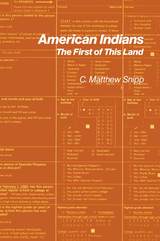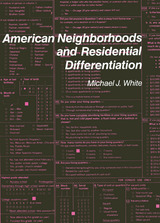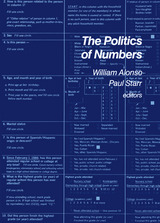3 books about Census, 1980

American Indians
The First of This Land
C. Matthew Snipp
Russell Sage Foundation, 1989
Native Americans are too few in number to swing presidential elections, affect national statistics, or attract consistent media attention. But their history illuminates our collective past and their current disadvantaged status reflects our problematic present. In American Indians: The First of This Land, C. Matthew Snipp provides an unrivaled chronicle of the position of American Indians and Alaskan Natives within the larger American society. Taking advantage of recent Census Bureau efforts to collect high-quality data for these groups, Snipp details the composition and characteristics of native Indian and Alaskan populations. His analyses of housing, family structure, language use and education, socioeconomic status, migration, and mortality are based largely on unpublished material not available in any other single source. He catalogs the remarkable diversity of a population—Eskimos, Aleuts, and numerous Indian tribes—once thought doomed to extinction but now making a dramatic comeback, exceeding 1 million for the first time in 300 years. Also striking is the pervasive influence of the federal bureaucracy on the social profile of American Indians, a profile similar at times to that of Third World populations in terms of literacy, income, and living conditions. Comparisons with black and white Americans throughout this study place its findings in perspective and confirm its stature as a benchmark volume. American Indians offers an unsurpassed overview of a minority group that is deeply embedded in American folklore, the first of this land historically but now among the last in its socioeconomic hierarchy. A Volume in the Russell Sage Foundation Census Series
[more]

American Neighborhoods and Residential Differentiation
Michael J. White
Russell Sage Foundation, 1987
Residential patterns are reflections of social structure; to ask, "who lives in which neighborhoods," is to explore a sorting-out process that is based largely on socioeconomic status, ethnicity, and life cycle characteristics. This benchmark volume uses census data, with its uniquely detailed information on small geographic areas, to bring into focus the familiar yet often vague concept of neighborhood. Michael White examines nearly 6,000 census tracts (approximating neighborhoods) in twenty-one representative metropolitan areas, from Atlanta to Salt Lake City, Newark to San Diego. The availability of statistics spanning several decades and covering a wide range of demographic characteristics (including age, race, occupation, income, and housing quality) makes possible a rich analysis of the evolution and implications of differences among neighborhoods. In this complex mosaic, White finds patterns and traces them over time—showing, for example, how racial segregation has declined modestly while socioeconomic segregation remains constant, and how population diffusion gradually affects neighborhood composition. His assessment of our urban settlement system also illuminates the social forces that shape contemporary city life and the troubling policy issues that plague it. A Volume in the Russell Sage Foundation Census Series
[more]

The Politics of Numbers
William Alonso
Russell Sage Foundation, 1987
The Politics of Numbers is the first major study of the social and political forces behind the nation's statistics. In more than a dozen essays, its editors and authors look at the controversies and choices embodied in key decisions about how we count—in measuring the state of the economy, for example, or enumerating ethnic groups. They also examine the implications of an expanding system of official data collection, of new computer technology, and of the shift of information resources into the private sector. A Volume in the Russell Sage Foundation Census Series
[more]
READERS
Browse our collection.
PUBLISHERS
See BiblioVault's publisher services.
STUDENT SERVICES
Files for college accessibility offices.
UChicago Accessibility Resources
home | accessibility | search | about | contact us
BiblioVault ® 2001 - 2024
The University of Chicago Press









